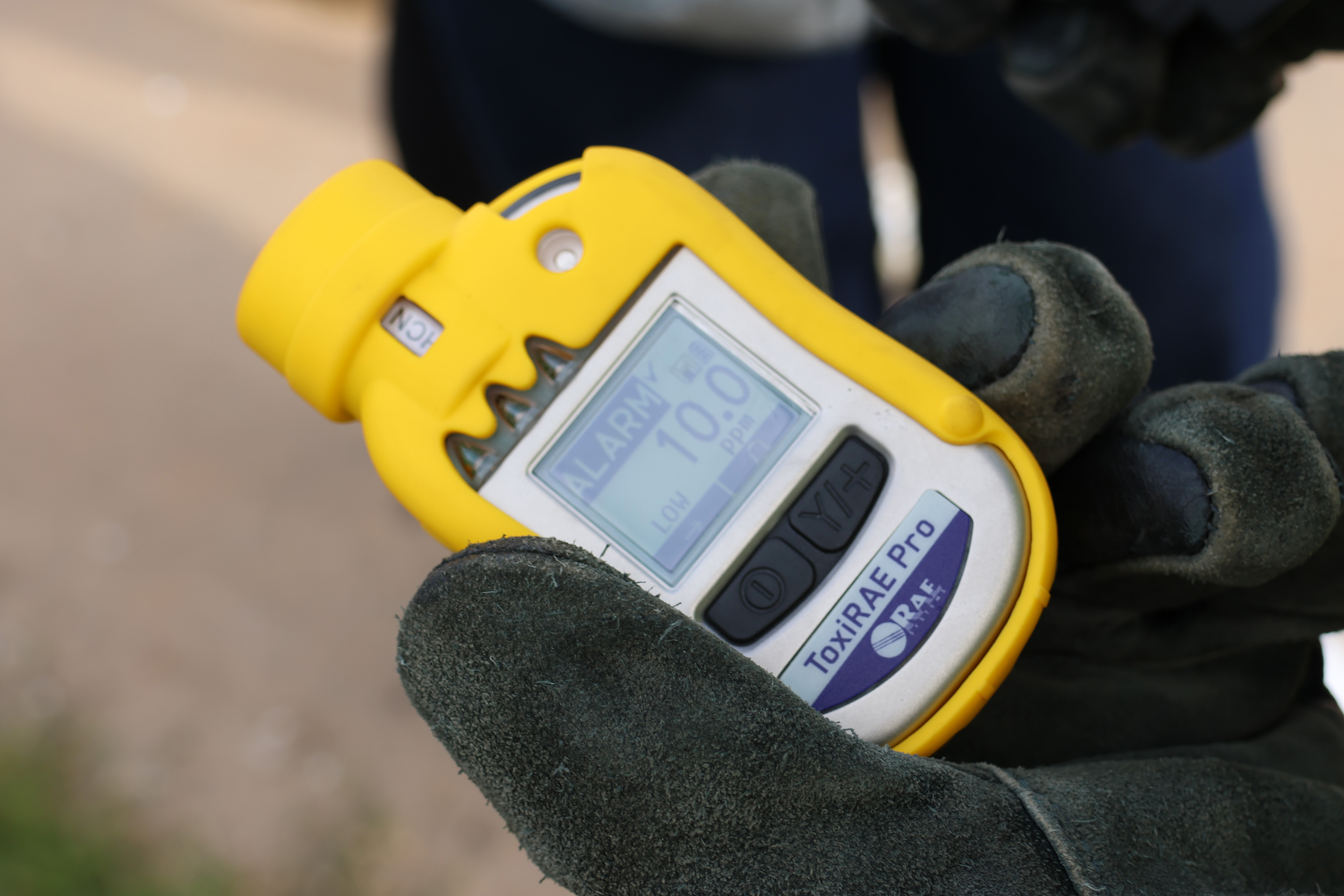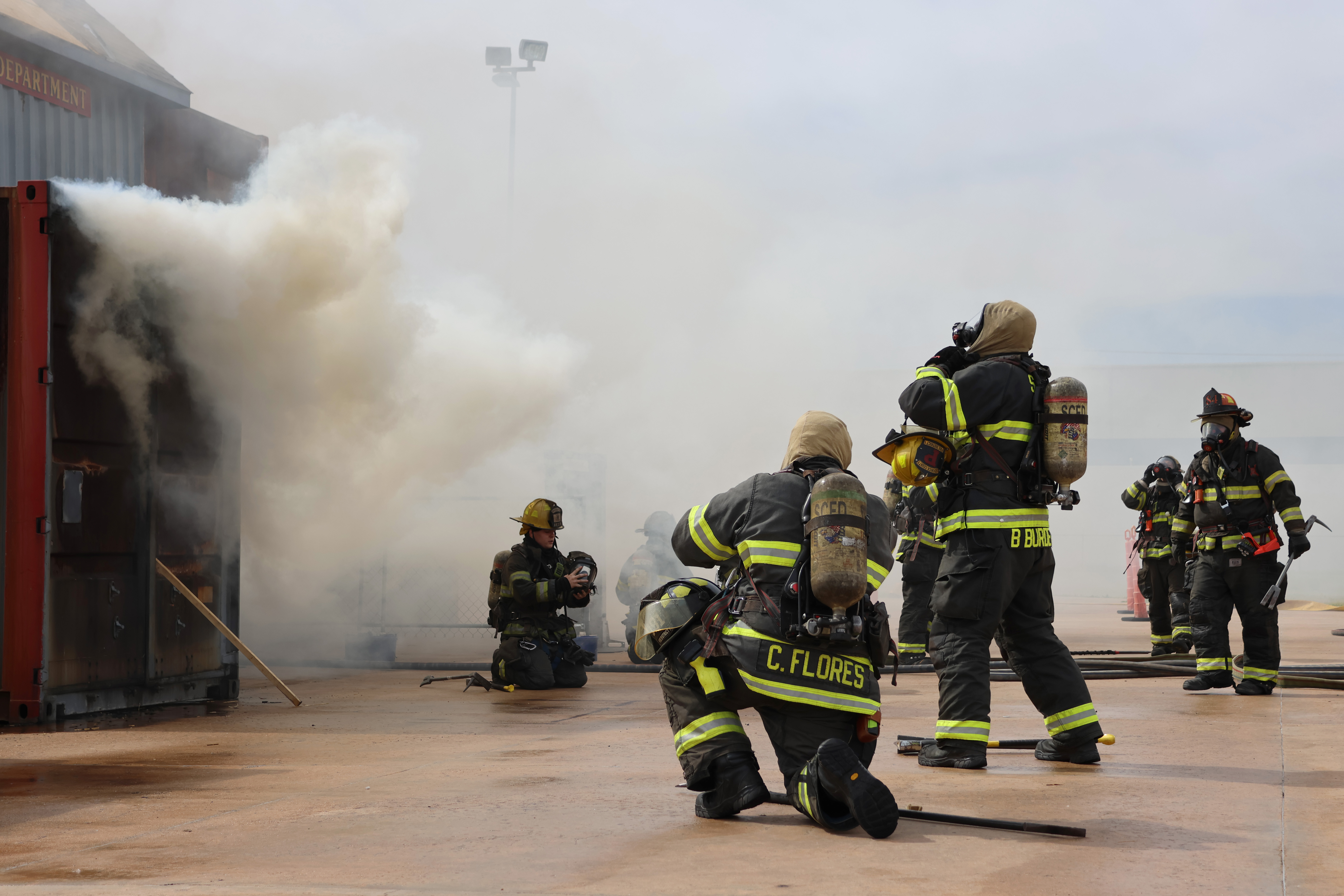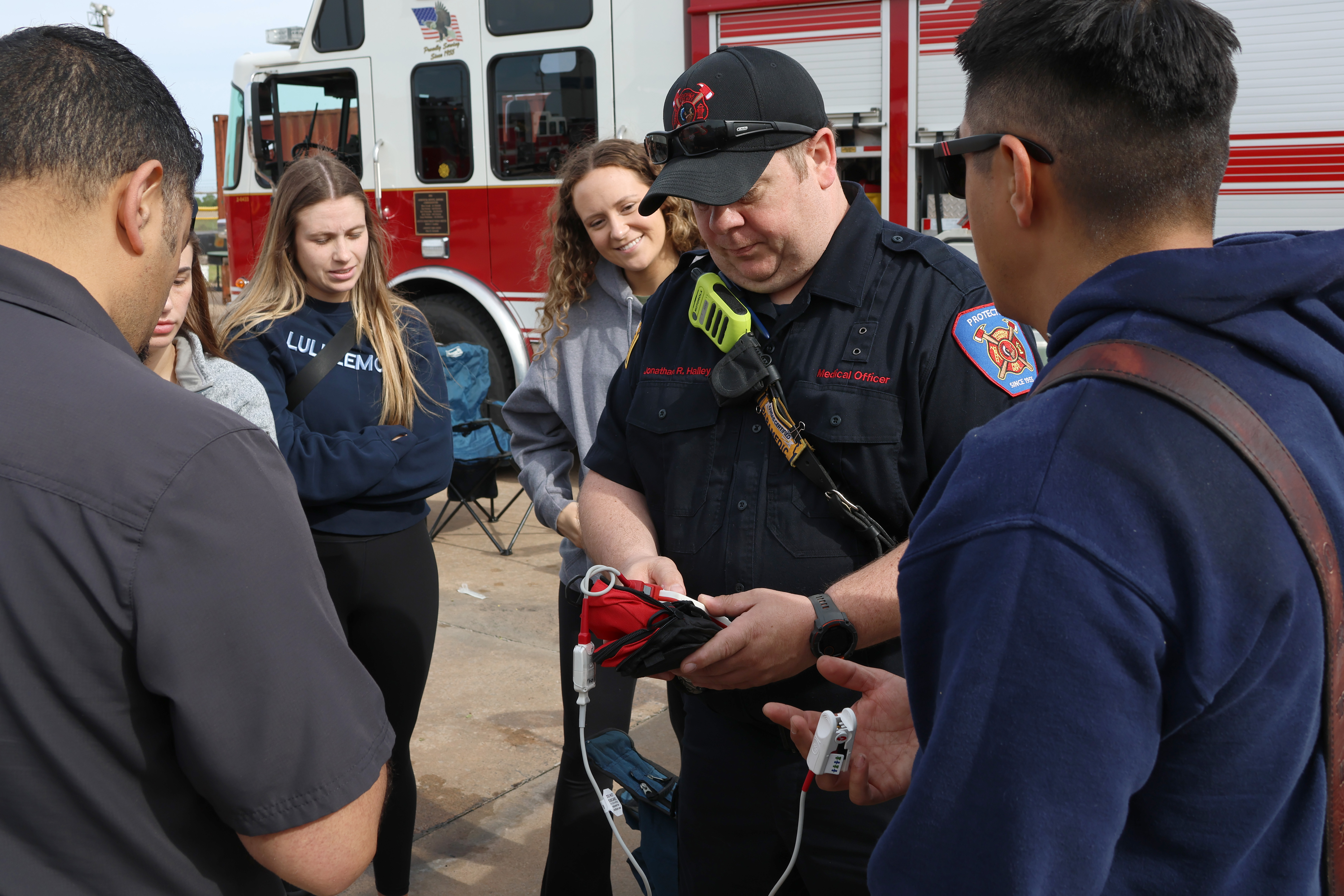Hydrogen Cyanide Research
As firefighters, we are always striving to improve our tactics, our equipment and our knowledge to better serve the community. This drive is what led Sedgwick County Fire District 1 to reach out to our partners in the medical community and our fellow first responders to address the critical lack of research into hydrogen cyanide treatment and exposure.
Thank you to our partners in this endeavor: Kansas Health Science University, the Kansas College of Osteopathic Medicine, The Kansas Education and Research Network, Butler County EMS, Derby Fire Department, Andover Fire Department and the Wichita Fire Department.
JUMP TO A SECTION:
- What is Hydrogen Cyanide?
- How is Cyanide Poisoning Treated?
- Unanswered Questions
- People at Risk
- Live Fire Training Drill
- Initial Research and Findings
- Future Endeavors
What is Hydrogen Cyanide?
Hydrogen Cyanide (HCN) is a highly toxic chemical used in mining operations, and pest control and and historically, was even used as a chemical weapon. Exposure can cause headaches, dizziness, vomiting, weakness and death depending on the concentration of exposure.
In high heat and low oxygen environments (like a house fire) nitrogen rich synthetic polymers produce hydrogen cyanide and carbon monoxide (CO). These polymers are found in many common elements in modern homes: mattresses, upholstered furniture, spray foam insulation, carpet and the glues within composite woods.

How is Cyanide Poisoning Treated?
As of right now, the standard treatment for cyanide poisoning is hydroxocobalamin (Cyanokit), a fast-acting antidote that binds to the HCN molecules, preventing it from damaging the body.
The challenges with CyanoKit:
- It is expensive.
- Despite FDA approval, there is limited research on its effectiveness or side effects.
- Cyanide levels are difficult to test for in fire victims - whether it's firefighters or patients while on scene - making it difficult to determine whether the Cyanokit should be used.
CyanoKit usage within SCFD
Previously, CyanoKit was only to be used on code blue victims. As of January, 2025 the Sedgwick County Office of the Medical Director has revised the protocols to allow treatment for all smoke inhalation victims. Going forward, Cyanokits will be stocked on both Battalions for use on fires.
Unanswered Questions
- How much HCN is actually present in the composition of smoke?
- Is the common assumption of high levels of CO correlated to high levels of HCN a correct?
- How specifically does hydrogen cyanide affect the body?
- After the fire is extinguished, can the exposure risk continue and for how long?
- Is Cyanokit the most effective treatment for cyanide poisoning, or are there better options out there with less side effects?
- Is there a way to reduce the risk of poisoning for our first responders?
Unfortunately, due to a significant lack of research in this area we were unable to answer any of these questions. In addition, monitoring equipment was limited, making it difficult both to analyze conditions at a fire scene as well as properly identifying victims of cyanide poisoning.
This lack of information is what drove SCFD to start reaching out to our partners to see if would start finding some answers.
People at Risk
This lack of knowledge directly affects:
Patients
Lacking the ability to quickly and definitively identify patients suffering from cyanide poisoning makes treatment difficult, potentially wasting valuable time and costing lives.
Firefighters
While self-contained breathing apparatus (SCBA) use is associated with a reduced exposure risk, not all jobs on the fireground require the use of SCBA. Without knowing how long or how far from the fire the air remains toxic, the firefighters in these jobs could be putting themselves at risk.
Having a better understanding of what materials produce HCN and how to mitigate that risk would be helpful not just on calls, but during our live fire training and recruit academies as well.

Live Fire Training Drill
Along with other local fire departments, SCFD organized a live fire drill at the Wichita Regional Training Center and invited researchers to come observe. This allowed the researchers a better understanding of fire ground roles, exposure scenarios, and the usage of self-contained breathing apparatus (SCBA).
Hydrogen cyanide detectors were used at the fire drill, and found higher levels of HCN than were expected given that the primary fuel for the fire was organic materials not high in nitrogen (hay, wood pallets, oriented strand board).
Initial Research and Findings
The Kansas Health Science University and the Kansas College of Osteopathic Medicine have released their findings. PDFs of the research posters are available below. Additional information can also be found this article on the Kansas Health Science University's website.
For the most part, the results confirm what we already knew: that we have a lot more to learn. But this gives us a jumping-off point for more targeted research in the future.
Future Endeavors
- Controlled burns to measure the amount of HCN produced by burning differing materials.
- Studies examining the degree of cyanide exposure during fire suppression activities. This includes measuring exposure for different fireground roles, which would provide insight into with crew members are at the highest risk.
- Further study on the effectiveness of CyanoKit while developing protocols for more targeted use.

